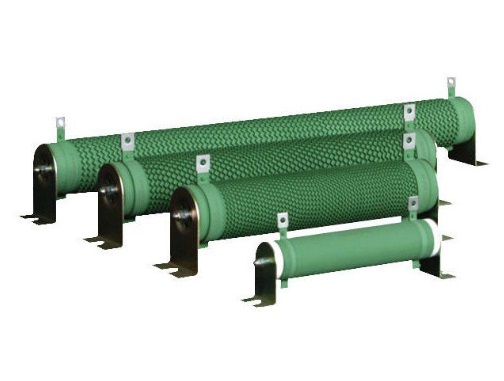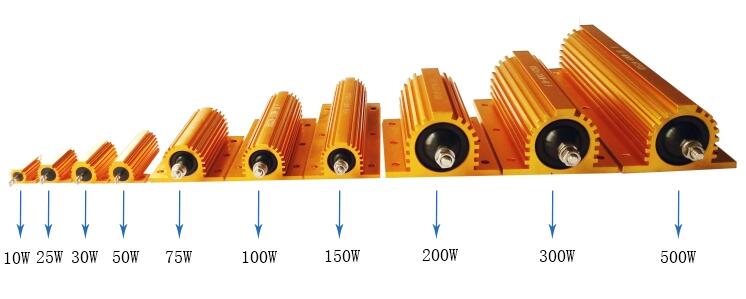Position:Home » Industry News
The Affect of Geography and Climate on Resistors in South America
Writer:Microhm Page View:Date:2019-11-12
South America is often known as the continent of extremes, it is home to both the world’s greatest river and the driest desert. Its geographic variations include the snow-capped Andes, tropical jungle, savannah-style grasslands, the mighty Amazon and Orinoco river deltas and coastal plains. This extreme geography has resulted in the formation of isolated communities, which means that power distribution can be piecemeal in nature. This kind of geography and climate affects the resistor market.
Remote conditions
The power needs of communities and remote locations can have a number of indirect effects on the resistor market. Geographical constraints on electrical distribution have resulted in a de facto reliance on localised generation and battery technology in some places. Localised generation systems, which often consist of several generators, are usually isolated from the grid network. In the event of an earth fault, resistors from Microhm Electronics can be used to limit the flow of current and thereby the risk of damage to generators and other equipment, however, where multiple generators are connected in parallel to avoid circulating earth currents, only one generator should be earthed. One way of ensuring this is to use a single earthing resistor with multiple vacuum contactors. It is essential that backup battery systems work properly when called into action. Portable Load Units can be used to test the capacity of standby batteries and the output of generators by simulating the working load. As standby systems are often installed at remote locations, test equipment must be easily transportable. Because Microhm Electronics' load units were originally developed for use in the field by telecoms, rail and offshore companies, they are easy to handle and can be operated by one person.

Climate
From the hot and wet climate of the Amazon basin through to the snow-capped Andes and the deserts of Chile, Peru and Venezuela, the continent’s climate varies greatly in accordance with its geography, ocean currents and winds. These challenging environments demonstrate the importance of equipment being designed appropriately, with respect to mechanical, electrical and environmental positions. Enclosures must be used to protect contents from external elements, including wind, rain and sea mist, yet allow sufficient ventilation to dissipate the heat generated during operation.
In order to achieve trouble-free operation, engineers must ensure enclosures are designed to avoid high levels of humidity and contamination as these can reduce insulation resistance.
Using non-hygroscopic materials and correct insulation design mitigates against the build-up of pollution, which will ensure the long and safe working life of equipment. Natural disasters are relatively common in Latin America. This means that equipment needs to be resilient to earthquake tremors.
Originally developed for use in rail traction and on board ships, Microhm Electronics’ resistors are can be designed to withstand high levels of shock and vibration. Where specific seismic criteria needs to be met, finite element analysis tools are used to ensure suitability.

Wind power
With Latin America expected to commission more than 47GW of new wind power capability between 2017 and 2026, this particular renewable source is a popular choice. With a relatively low population density and energy needs in remote areas, Brazil, Chile, Peru and Columbia offer an ideal scenario to harness wind energy. Multiple types of resistor are used in wind power generation, including Pre-Insertion Resistors (PIRs), Dynamic Braking Resistors (DBRs) and crowbar resistors.
PIRs limit the in-rush current into transformers when the system is switched on. DBRs control the over-speeding of turbines from gusting winds and crowbar resistors can prevent damage to the power electronics of the turbine by short-circuting the rotor windings in the event of a grid disturbance. Larger installations, such as off-shore wind farms use large damping resistors in complex static VAR compensator (SVC) networks. These resistors help stabilise fluctuating voltages brought about by changing wind speeds.
Keywords:
Latest News
- Resistor's role in measuring and correcting LED,,,
- Single through-hole resistors' characteristics ,,,
- Why shunt resistors for current sense applicati,,,
- Metal-film resistors with small size, high resi,,,
- 36W High-Current Shunt Resistors MMS8420,,,
- 1W Surface Mount Resistor MPR1206,,,
- An Overview of Microhm Electronics' Resistor Pr,,,
- More anti-sulfur resistors used in harsh envir,,,
- Resistance changes with temperature,,,
- 140W TO247 High Power Heatsinkable Resistor,,,
- MMS5930 is ideal for current sensing in industr,,,
- Shunt resistors selection for engineers' design,,,
- Considerations for choosing precision resistors,,,
- Ceramic Encased Cement Resistors NWH Series for,,,
- Resistors for Passive Balancing in Battery-Pow,,,
Hot Articles
- Microhm will take part in 10th Automotive World,,,
- Thanks for Visiting Microhm's Booth E5-5706 in ,,,
- Resistors in Short Supply: Blame Cars,,,
- New lunch: High Power Precision Shunt Resistor,,,,
- How to Test a Resistor,,,
- Innovative Technology, Future Electric: Electri,,,
- What is Precision Resistors?,,,
- SMD Resistors Sizes and Packages,,,
- The Construction and Features of Metal Film Res,,,
- What is a TO-220 Resisor?,,,
- Hot Selling Products: Precision Shunt Resistors,,,
- How to Calculate the Equivalent Resistance Valu,,,
- What is a Fixed Resistor?,,,
- Resistors in LED Circuits,,,
- Resistors Types and Materials Overview,,,
Resistance applications
- BMS for New Energy Vehicle,,,
- Surface Mount Resistor's Size and Package ,,,
- Shunt Resistor MMS8420 for High Current Stable ,,,
- Precision Resistors' Construction and TCR,,,
- Heater Blower Motor Resistor in Air Conditioner,,,
- Difference Between High Precision Resistors and,,,
- Miniature future for passive electronic compone,,,
- Urbanization Development Bringing the Transform,,,
- The Four Important Functions of Alloy Resistors,,,
- Carbon Film Resistors' Features and Application,,,
- The Main Application for High Precision and Low,,,
- Industrial Roberts Applied to Solar Photovoltai,,,
- Select the Right Resistor for Harmonic Filterin,,,
- Why Zero-Ohm Resistors?,,,
- The Measurement Accuracy of Automotive Shunt is,,,
